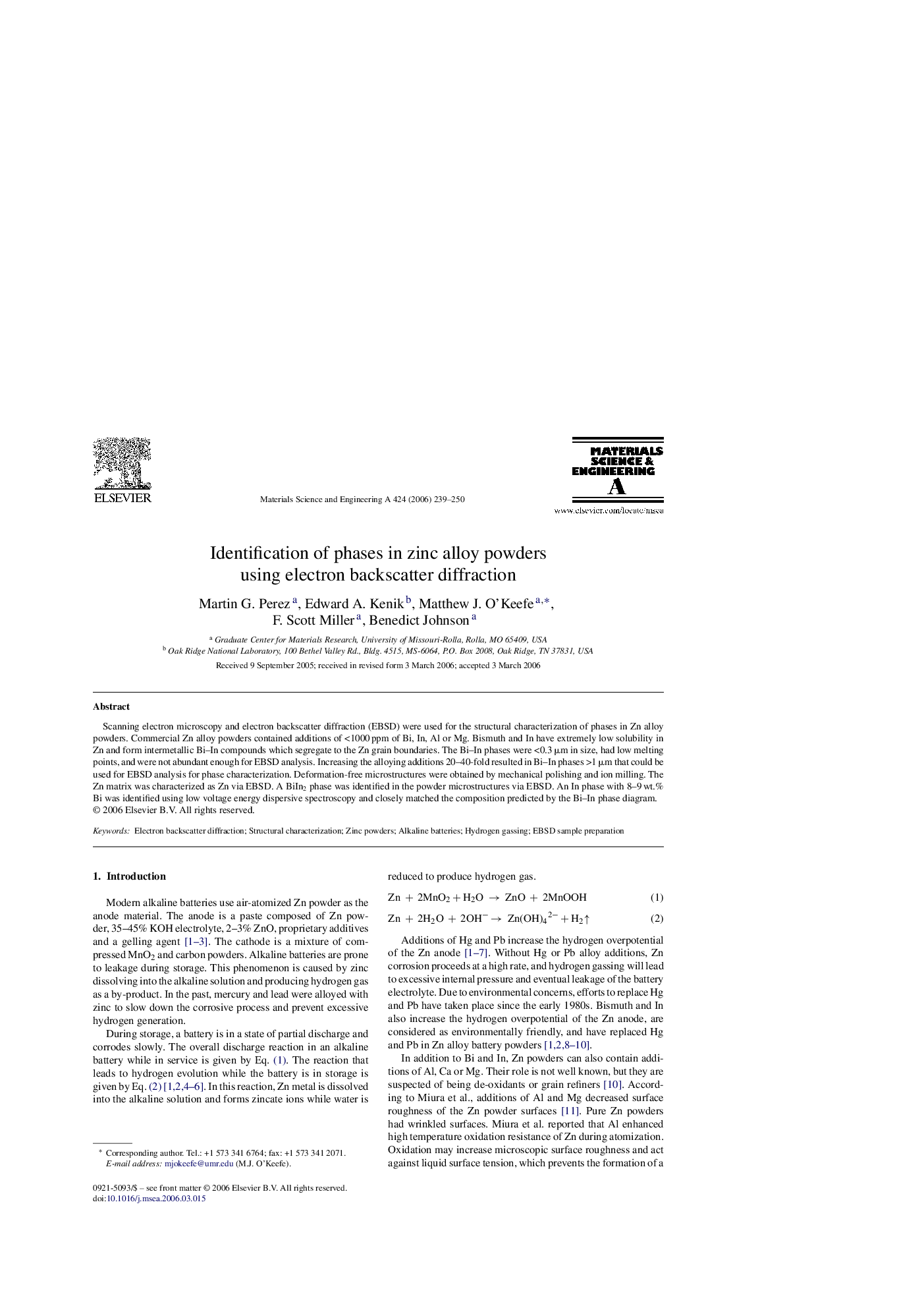| Article ID | Journal | Published Year | Pages | File Type |
|---|---|---|---|---|
| 1585497 | Materials Science and Engineering: A | 2006 | 12 Pages |
Abstract
Scanning electron microscopy and electron backscatter diffraction (EBSD) were used for the structural characterization of phases in Zn alloy powders. Commercial Zn alloy powders contained additions of <1000 ppm of Bi, In, Al or Mg. Bismuth and In have extremely low solubility in Zn and form intermetallic Bi-In compounds which segregate to the Zn grain boundaries. The Bi-In phases were <0.3 μm in size, had low melting points, and were not abundant enough for EBSD analysis. Increasing the alloying additions 20-40-fold resulted in Bi-In phases >1 μm that could be used for EBSD analysis for phase characterization. Deformation-free microstructures were obtained by mechanical polishing and ion milling. The Zn matrix was characterized as Zn via EBSD. A BiIn2 phase was identified in the powder microstructures via EBSD. An In phase with 8-9 wt.% Bi was identified using low voltage energy dispersive spectroscopy and closely matched the composition predicted by the Bi-In phase diagram.
Related Topics
Physical Sciences and Engineering
Materials Science
Materials Science (General)
Authors
Martin G. Perez, Edward A. Kenik, Matthew J. O'Keefe, F. Scott Miller, Benedict Johnson,
